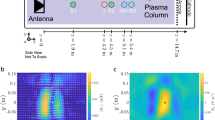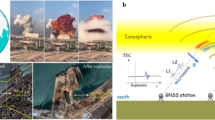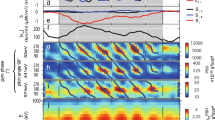Abstract
IT is well known that in the ionosphere (a doubly refractive medium) a radio wave splits into two components, commonly designated as the ordinary and extraordinary modes. The propagation characteristics of the medium are determined from the corresponding ordinary and extraordinary indices of refraction. The modes may be appreciably coupled in certain ionospheric regions1, depending upon the wave-frequency and other factors.
This is a preview of subscription content, access via your institution
Access options
Subscribe to this journal
Receive 51 print issues and online access
$199.00 per year
only $3.90 per issue
Buy this article
- Purchase on Springer Link
- Instant access to full article PDF
Prices may be subject to local taxes which are calculated during checkout
Similar content being viewed by others
References
Gibbons, J. J., and Nertney, R. J., J. Geophys. Res., 57, No. 3 (Sept. 1952).
Schrag, R. L., Sci. Rep. No. 33. Ionosphere Research Laboratory, Pennsylvania State College (March 1952).
Mitra, S. K., “The Upper Atmosphere”, 152 (Royal Asiatic Society of Bengal).
Gibbons, J. J., and Schrag, R. L., J. App. Phys., 23, No. 10 (Oct. 1952).
Kelso, J. M., Nearhoof, H. J., Nertney, R. J., and Waynick, A. H., Ann. Geophys., 7, No. 4 (Oct.–Dec. 1951).
Booker, H. G., Proc. Conf. Ionos. Res., Pennsylvania State College (1950).
Scott, J. C. W., Proc. Inst. Rad. Eng., 38, No. 9 (Sept. 1950).
Author information
Authors and Affiliations
Rights and permissions
About this article
Cite this article
GIBBONS, J., SCHRAG, R. & WAYNICK, A. Long-Delay Ionospheric Echoes at 150 kc./s.. Nature 171, 444–445 (1953). https://doi.org/10.1038/171444a0
Issue Date:
DOI: https://doi.org/10.1038/171444a0
Comments
By submitting a comment you agree to abide by our Terms and Community Guidelines. If you find something abusive or that does not comply with our terms or guidelines please flag it as inappropriate.



